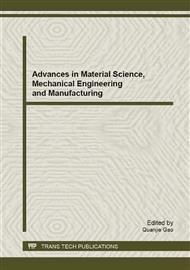p.353
p.357
p.362
p.366
p.370
p.375
p.379
p.383
p.388
The Preparation of Honeycomb Cordierite Mn-Ce/TiO2 Catalyst and Denitration Performance
Abstract:
SCR catalyst is the core of SCR technology. More attention to manganese oxide-based catalysts has been paid due to their excellent catalytic activities in low-temperature selective catalytic reduction of NOx by NH3 (NH3-SCR) in recent years. In this paper, the preparation method of honeycomb cordierite Mn-Ce/TiO2 catalyst and denitration performance is studied. Different amount of TiO2, Mn and Ce are supported on the cordierite ceramic and the SCR catalytic tests are conducted. In the tests, the influence of Mn/Ti molar ratio on the denitration performance and the effect of reaction temperature, inlet NO concentration, volumetric space velocity and ammonia nitrogen ratio on the denitration performance are found. The results show: (1) Mn/TiO2 catalyst has the highest catalytic activity when the Mn/Ti molar ratio is 0.4. (2) The optimum reaction condition of honeycomb cordierite Mn-Ce/TiO2 catalyst denitration reaction is the inlet NO concentration is 0.075%, volumetric space velocity is 4000 h 1 and ammonia nitrogen ratio is 1.05.
Info:
Periodical:
Pages:
370-374
Citation:
Online since:
August 2013
Authors:
Price:
Сopyright:
© 2013 Trans Tech Publications Ltd. All Rights Reserved
Share:
Citation:


